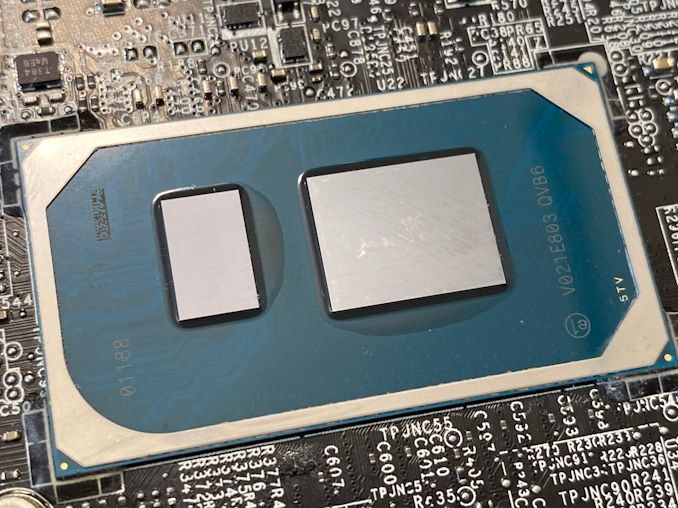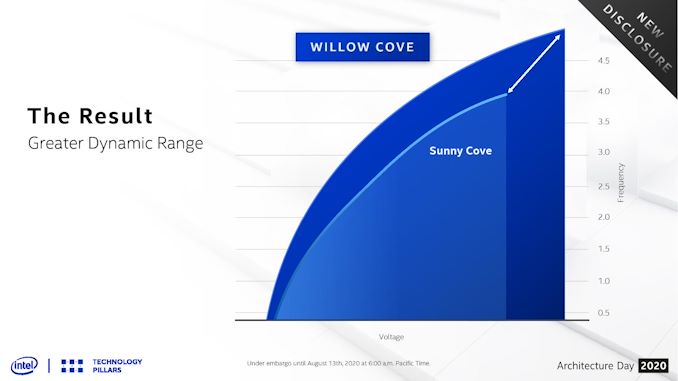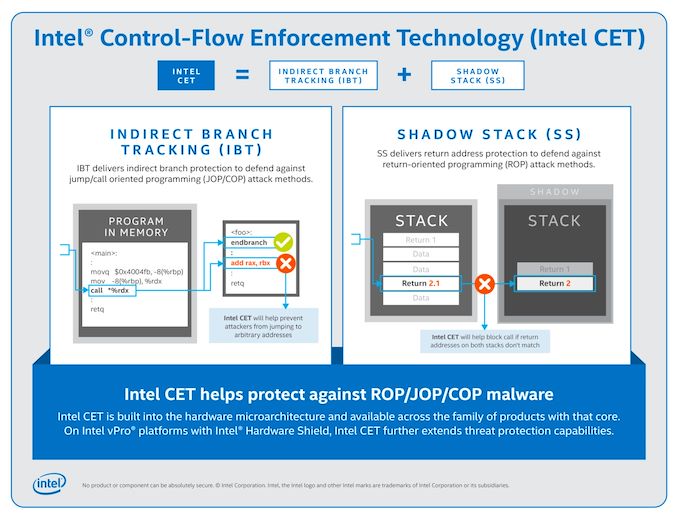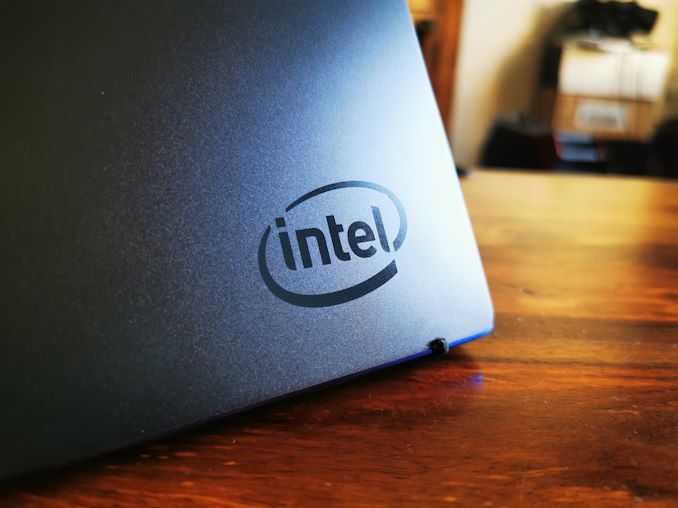Intel’s Tiger Lake 11th Gen Core i7-1185G7 Review and Deep Dive: Baskin’ for the Exotic
by Dr. Ian Cutress & Andrei Frumusanu on September 17, 2020 9:35 AM EST- Posted in
- CPUs
- Intel
- 10nm
- Tiger Lake
- Xe-LP
- Willow Cove
- SuperFin
- 11th Gen
- i7-1185G7
- Tiger King
Conclusion: Is Intel Smothering AMD in Sardine Oil?
Whenever a new processor family is reviewed, it is easy to get caught up in the metrics. More performance! Better power consumption! Increased efficiency! Better clock-for-clock gains! Amazing price! Any review through a singular lens can fall into the trap of only focusing on that specific metric. So which metrics matter more than others? That depends on who you are and what the product is for.
Tiger Lake is a mobile processor, featuring Intel's fastest cores and new integrated graphics built with an updated manufacturing process. This processor will be cast into the ultra-premium notebook market, as it carries the weight of the best Intel has to offer across a number of its engineering groups. Intel is actively working with its partners to build products to offer the best in performance for this segment right before a discrete GPU is absolutely needed.
As a road warrior, pairing the right performance with power efficiency is a must. In our benchmarks, due to the new process node technology as well as the updated voltage/frequency scaling, we can see that Tiger Lake offers both better performance at the same power compared to Ice Lake, but it also extends the range of performance over Ice Lake, assisted by that much higher turbo boost frequency of 4.8 GHz. When Tiger Lake gets into retail systems, particularly at the 15 W level, it is going to be fun to see what sort of battery life improvements during real-world workflows are observed.
As an engineer, genuine clock-for-clock performance gains get me excited. Unfortunately Tiger Lake doesn't deliver much on this front, and in some cases, we see regressions due to the rearranged cache depending on the workload used. This metric ignores power - but power is the metric on which Tiger Lake wins. Intel hasn't really been wanting to talk about the raw clock-for-clock performance, and perhaps understandably so (from a pure end-user product point of view at any rate).
Tiger Lake has updates for security as well as Control-Flow Enforcement Technology, which is a good thing, however these are held behind the vPro versions, creating additional segmentation in the product stack on the basis of security features. I’m not sure I approve of this, potentially leaving the non-vPro unsecure and trying to upsell business customers for the benefit.
The new Tiger Lake stills falls down against the competition when we start discussing raw throughput tests. Intel was keen to promote professional workflows with Tiger Lake, or gaming workflows such as streaming, particularly at 28 W rather than at 15 W. Despite this we can easily see that the 15 W Renoir options with eight cores can blow past Tiger Lake in a like-for-like scenario in our rendering tests and our scalable workloads. The only times Intel scores a win is due to accelerator support (AVX-512, DP4a, DL Boost). On top of that, Renoir laptops in the market are likely to be in a cheaper price bracket than what Intel seems to be targeting.
If Intel can convince software developers to jump on board with using its accelerators, then both the customers will benefit as will Intel’s metrics. The holy grail may be when it comes to OneAPI, enabling programmers to target different aspects of Intel’s eco-system under the same toolset. However OneAPI is only just entering v1.0, and any software project base building like that requires a few years to get off the ground.
For end-user performance, Tiger Lake is going to offer a good performance improvement over Ice Lake, or the same performance at less power. It’s hard to ignore. If Intel’s partners can fit 28 W versions of the silicon into the 15 W chassis they were using for Ice Lake, then it should provide for a good product.
We didn’t have too much time to go into the performance of the new Xe-LP graphics, although it was clear to see that the 28 W mode does get a good performance lift over the 15 W mode, perhaps indicating that DG1 (the discrete graphics coming later) is worth looking out for. Against AMD’s best 15 W mobile processor and integrated graphics, our results perhaps at the lower resolutions were skewed towards AMD, but the higher resolutions were mostly wins for Intel - it seemed to vary a lot depending on the game engine.
As a concept, Tiger Lake’s marketing frustrates me. Not offering apples-to-apples data points and claiming that TDP isn’t worth defining as a singular point is demonstrating the lengths that Intel believes it has to go to in order to redefine its market and obfuscate direct comparisons. There was a time and a place where Intel felt the need to share everything, as much as possible, with us. It let us sculpt the story of where we envisaged the market was going, and OEMs/customers were on hand to add their comments about the viewpoints of the customer base from their perspective. It let us as the press filter back with comments, critiques, and suggestions. The new twist from Intel’s client division, one that’s actually been progressing along this quagmire path, will only serve to confuse its passionate customer base, its enthusiasts, and perhaps even the financial analysts.
However, if we’re just talking about the product, I’m in two minds for Tiger Lake. It doesn’t give those raw clock-for-clock performance gains that I’d like, mostly because it’s almost the same design as Ice Lake for the CPU cores, but the expansion of the range of performance coupled with the energy efficiency improvements will make it a better product overall. I didn’t believe the efficiency numbers at first, but successive tests showed good gains from both the manufacturing side of Intel as well as the silicon design and the power flow management. Not only that, the new Xe-LP graphics seem exciting, and warrant a closer inspection.
Tiger Lake isn’t sardine oil basting AMD just yet, but it stands to compete well in a number of key markets.














253 Comments
View All Comments
Rtx dude - Monday, September 28, 2020 - link
Thank youStingkyMakarel - Friday, September 18, 2020 - link
anyone tried running multiple single threaded app on Intel and AMD?dsplover - Friday, September 18, 2020 - link
Yes. A couple actually which each get a Core assignment. I’m an audio geek that came from using a PC for streaming from HDD’s (Seagate 10k SCSI Cheetahs) to a software based synthesizer enthusiast where single core performance is crucial.Started with AMD MPs/Tyan Tiger and Coppermine 1GHz CPU’s.
I’ve concluded that CPU Cache or 4.4GHz on an Intel is optimal.
Latency from extra cores causes me to adjust audio buffer sizes to compensate which I noticed on the Intel Quads. Conroe Dual Cores were faster for my core locked synths. A larger CPU cache overcame the inefficiencies when i7 Bloomdales hit the market.
Matisse 3800X was a great chip, but more than the 8 Cores was the same latency issues.
Looking forward to the Cezanne and maybe a Vermeer as I don’t need killer graphics, 2D is fine. Actually AST ASpeed 2500 Server chips on Supermicro and ASRock workstation/server boards is fine.
What I seek is the single core performance crown. Intel i7 4790k’s are still in my racks. To make me jump to new builds is a larger cache from Intel. Tiger Lake at 50watts looks great for my needs. 4.4GHz is as good as it gets. But even my ancient i7 5775C using a discrete GFX card, using the 128MB L4 cache for audio (running at 3.3GHz) was on par with the 4GHz 4790k.
So for me the CPU/IPC gains are appreciated, but cache and CPU running at 4+ GHz are really beneficial.
Tiger Lake or Cezanne will finally show me the results I need to upgrade.
Intel and AMD can add all of the Cores they want. Single core performance or larger cache to overcome the latency of additional Cores will mean I can run more high end Filters to shape my sounds with.
dromoxen - Saturday, September 19, 2020 - link
For me these are still too weak GFx despite 2x .. When they can match or better my gtx960 they might have a customer. Otherwise I''ll stick to a downclocked ryzen 4000+gtx960 ..I want low low heat output , and a single APU would be ideal ..ASROCK deskmini styleee .Gondalf - Friday, September 18, 2020 - link
Not only but the claimed 10/15% IPC boost of Zen 3 will be barely enough to be near with Intel clock to clock. Still Intel process clock clearly better, so the upcoming 8 cores Tiger Lake will be an easy winner over an eight core Zen 3.To be noticed, in productive benches Intel core destroy badly Zen. Likely the cache structure is done to perform great on standard laptop SW.
As usual a core have to be SW optimized, definitively not synthetic benches optimized. More or less the reason Xeon is right now a big winner on Epyc in the 32 cores/cpu market (the larger).
Spunjji - Friday, September 18, 2020 - link
You say this every time a new AMD processor is due, and every time you're wrong, and the next time you say the same damned things again. 😑close - Friday, September 18, 2020 - link
Subjective opinion time. Ian & Andrei, leaving aside individual scores (great ST performance for Intel, great MT performance for AMD), which one would you buy for day to day "regular" work?I've read opinions like "I made it painfully clear that the top-of-the-line Intel CPU at its highest cTDP was only going up against a mid-grade Ryzen" and there's still room for personal opinion here. Should you have to buy one now "money no issue" and ignoring specialized fields (like AI stuff where AVX-512 makes sense) which would you put your money on?
Spunjji - Friday, September 18, 2020 - link
I look forwards to the day when this Intel shill troll gets banned.melgross - Sunday, September 20, 2020 - link
Oh, come on. We have both AMD and Intel trolls here. They cancel out.Spunjji - Sunday, September 20, 2020 - link
There's being a fanboy, then there's creating an entire alter ego as some desperate attempt at satire that is inherently self-satirizing of the person running the account. I find this one deeply tiresome.